Object (Optical) Character Recognition (OCR) is a technology that converts any images containing written or printed text into a machine-readable format. Whether it is automatic text extraction, document conversion to PDF, or translation with a prone camera, character recognition apps stand behind it. This “hidden” technology is very widespread, powering many renowned apps such as Adobe Acrobat, Office Lens, Google Docs, Google Translate, etc.
As the business world goes digital, OCR has become a first step to digital transformation. The companies’ ability to fully complete the digital transformation journey highly depends on the way they operate. The current trend towards automation of manual routine work and enterprise-grade makes Object Character Recognition systems a must-have for keeping pace with today’s innovative world.
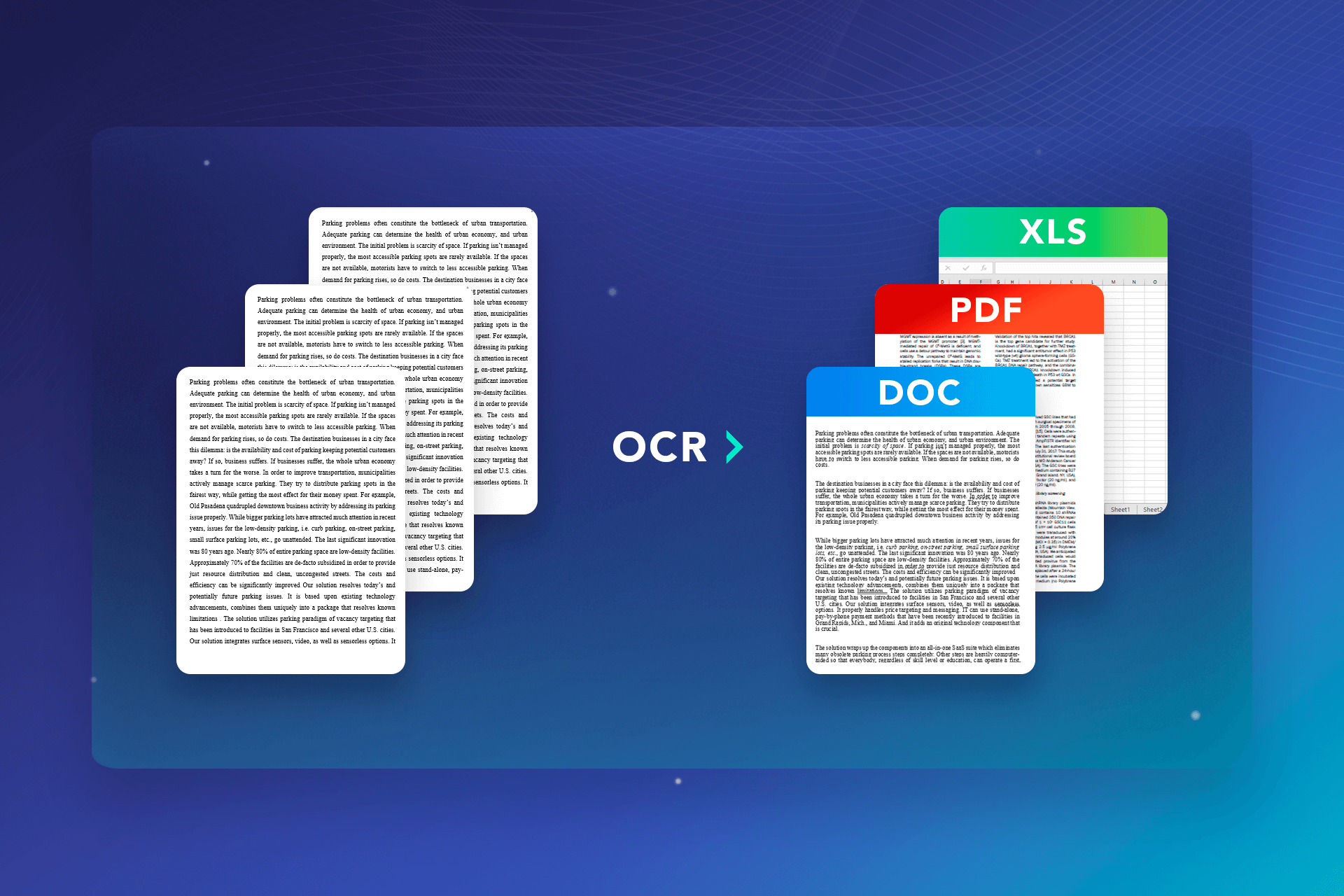
AI Business Case 2021
Object Character Recognition and How It Works
OCR software analyzes an image for light and dark areas, identifying light areas as background and dark areas as written characters. Then it converts the text inside the image into machine-readable text. This operation includes image acquisition, preprocessing, segmentation, feature extraction, classification, and post-processing.
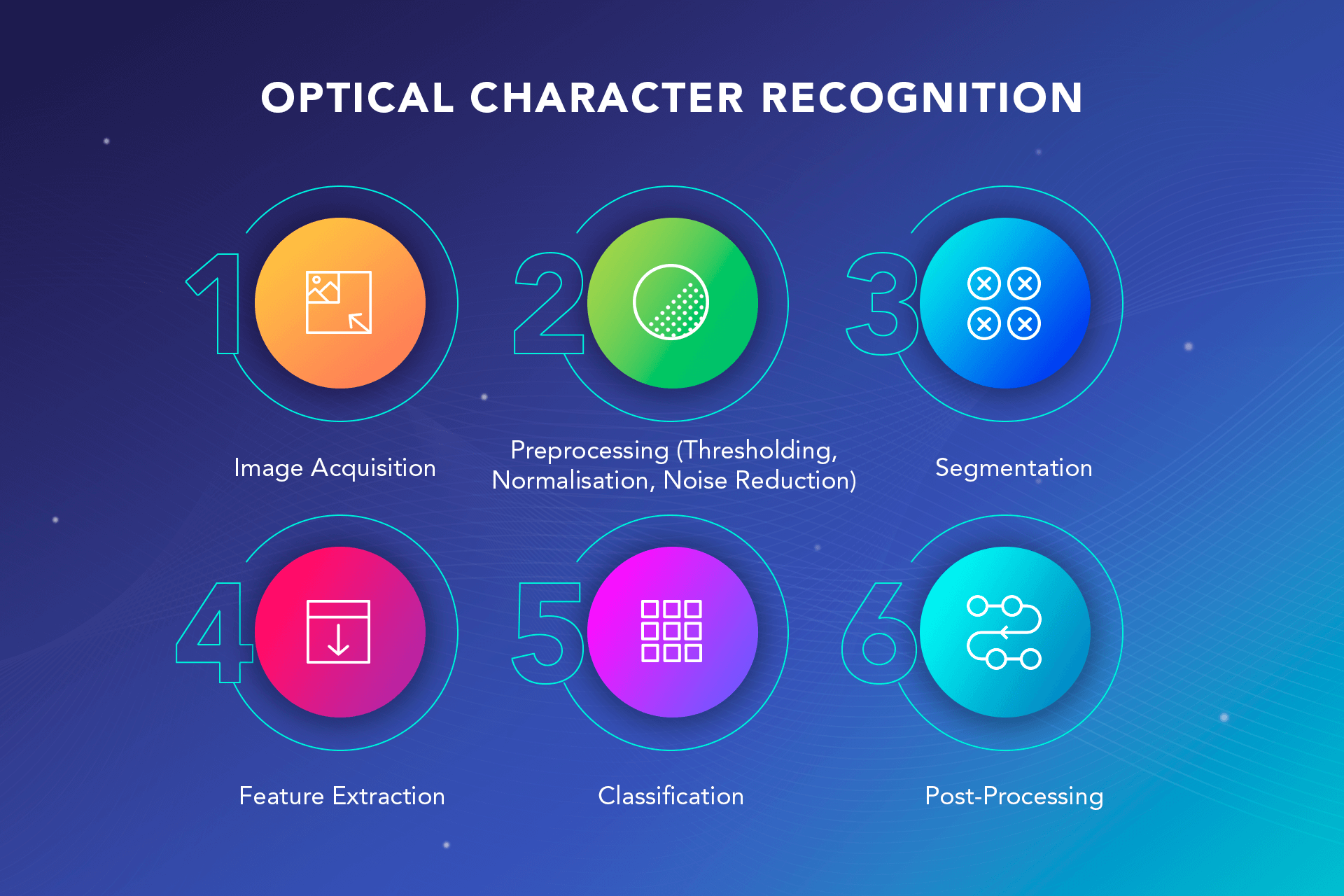
- Image acquisition
Scanning a physical document and uploading its digital copy into the OCR system.
- Preprocessing
The process refers to the training data that are used in the OCR model. Preprocessing incorporates thresholding (transforming a physical document into a binary image), normalization, and noise reduction.
- Segmentation
The segmentation technique aims to break a whole image into subparts, enabling the character recognition apps to process the document easily.
- Feature Extraction
Feature Extraction is used for extracting the most relevant information from the text image, enabling the software to recognize the characters in the text.
- Classification
The classification stage allows to identify the character categories.
- Post-processing
Post-processing is the process aimed at the reduction of noise and errors in the converted document.
OCR, ICR, and IWR
As Document Management has become an important component of every business undergoing digitalization, it is important to differentiate clearly between such terms as Optical Character Recognition (OCR), Intelligent Character Recognition (ICR), and Intelligent Word Recognition (IWR) .
Intelligent Character Recognition (ICR) refers to a recognition engine that can analyze not only printed but also handwritten texts and process various fonts, patterns, and numbers.
Intelligent Word Recognition (IWR) is a more complex technology that, rather than working with individual characters in both printed and handwritten text, can recognize entire words, including unconstrained handwritten text and fonts.
Most Popular OCR-Вriven Solutions
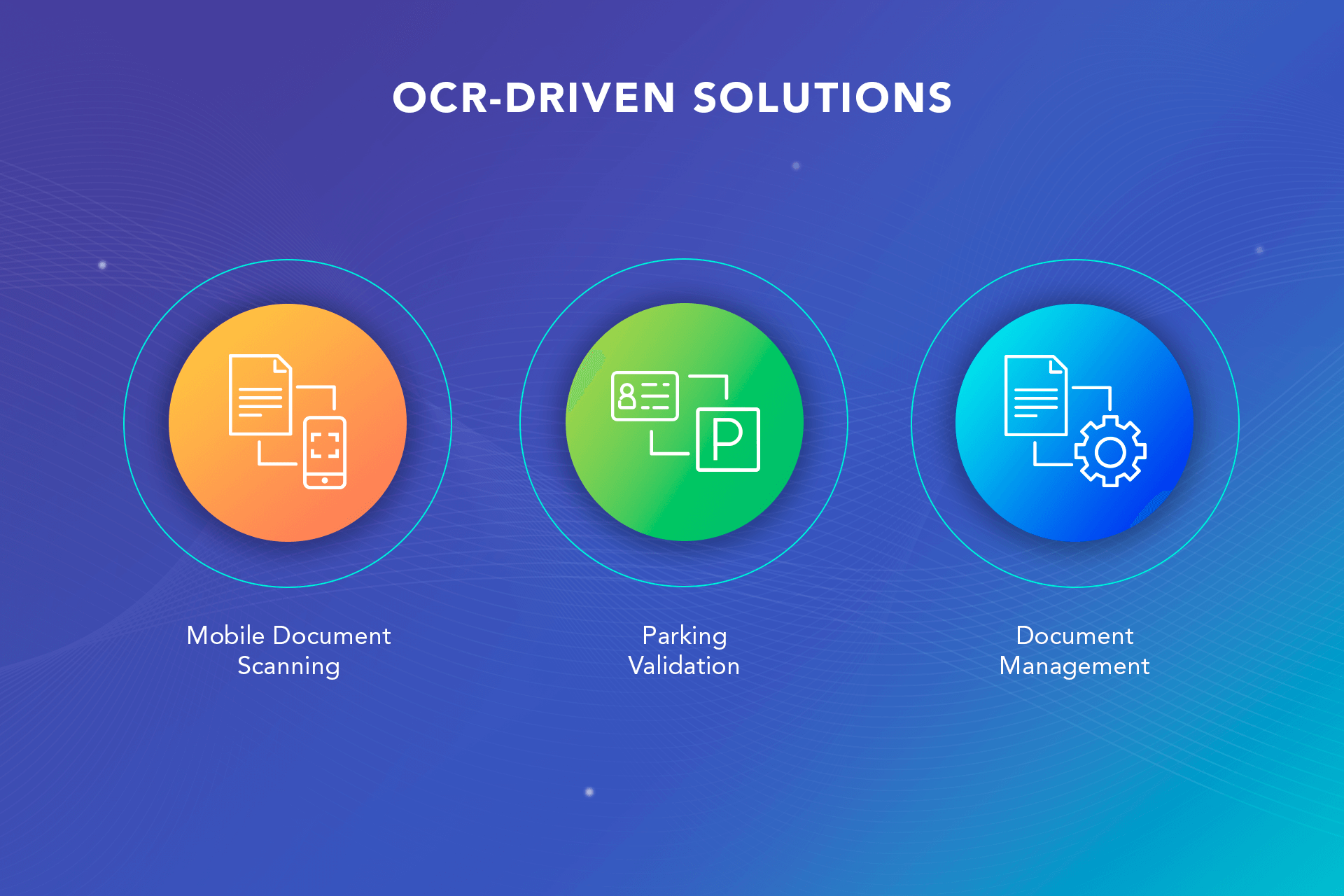
Mobile document scanning— an OCR-powered mobile application allows users to take a photo of a document and convert it to text data. This new feature of the character recognition apps makes smartphones more attractive for users, who no longer have to get the physical text scanned with the use of an additional device, as was the case with earlier, less technologically sophisticated systems.
Parking validation— City governments apply mobile character recognition apps to automatically validate that cars are parked legally according to state regulations. OCR-embedded mobile devices allow to scan license plates of vehicles and check against an online database whether relevant regulations are observed.
Document Management— Document Management (DM) refers to the automated workflow of company documents. A key aspect of a DM application is its ability to search and edit vast document flow. Applying OCR solutions facilitates the process of searching and sharing also of corporate information.
Read more about how to use Object Character Recognition for Quality Control.
Object Character Recognition has become a primary technology in every successful business, be it in the industrial or manufacturing industry. Depending on its operational area, OCR technology is used in various ways.
OCR Solutions for Various Industries
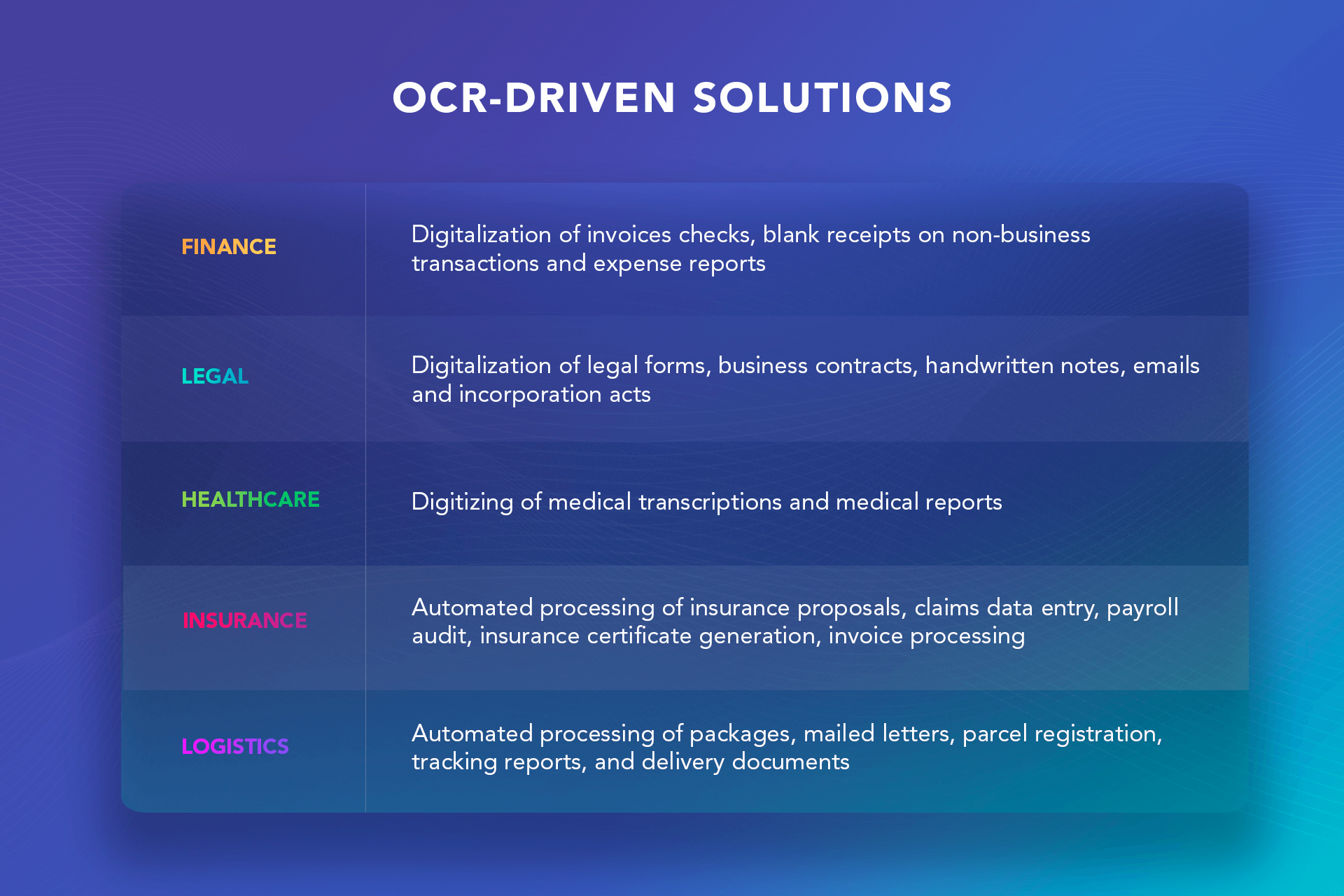
Finance Industry
Banks and other finance organizations have been using character recognition apps for quite a while. The most widespread use of OCR in Finance is invoice processing. The OCR technology enables a computer system to retrieve from the invoice any type of data, such as headers, supplier information, line items, etc. As a result, the invoice processing process is made faster and, thus, more efficient.
Object recognition technologies enhance not only invoice handling but also non-business transactions and expense reports where handwritten and printed checks and blank receipts are widely used.
Read more about the Classification of Financial Data.
Legal Industry
Character recognition apps are widely used in the extremely paper-intensive Legal Industry that manages thousands of documents daily. Advanced object recognition solutions enhance document management in legal companies, minimizing expenses and enhancing operational efficiency. The OCR technology allows to digitize and electronically store legal forms, business contracts, handwritten notes, emails, incorporation acts, etc. It is important to note that OCR-powered software, besides English, can support other languages, such as French, German, Russian, Urdu, Spanish, Arabic, etc.
Healthcare Industry
New trends in the dematerialization of operational processes and document digitization have also reached the healthcare industry. Digitizing medical transcriptions and transferring data into digital storage, such as Electronic Health Records, is now possible with Object Character Recognition. Applying this technology helps to prevent medical errors, decrease healthcare costs, raise administrative efficiencies, decrease paperwork, and expand access to affordable healthcare. Furthermore, the electronic transmission of data serves to improve the privacy and security of the existing health programs.
Read more about Data Science in Healthcare.
Insurance Industry
The insurance industry is one of the major consumers of character recognition apps. As insurance companies deal a lot with data entry operations, object recognition software is an effective tool to automate the processing of insurance proposals, claims data entry, payroll audits, insurance certificate generation, and invoice processing.
Logistics Industry
Object Character Recognition is a revolutionary technology that is widely used for enhancing data capture and management processes, as well as improving automated workflows in the logistics sphere. With character recognition applications, Supply Chain companies gain more value due to more accurate data capture by speeding operational processes and decreasing the cost of processing packages, mailed letters, parcel registration, tracking, and delivery. Moreover, OCR-driven software instantly recognizes and captures the text on the packaging, sending it directly to back-end systems for shipping validation.
Business Benefits of Character Recognition Apps
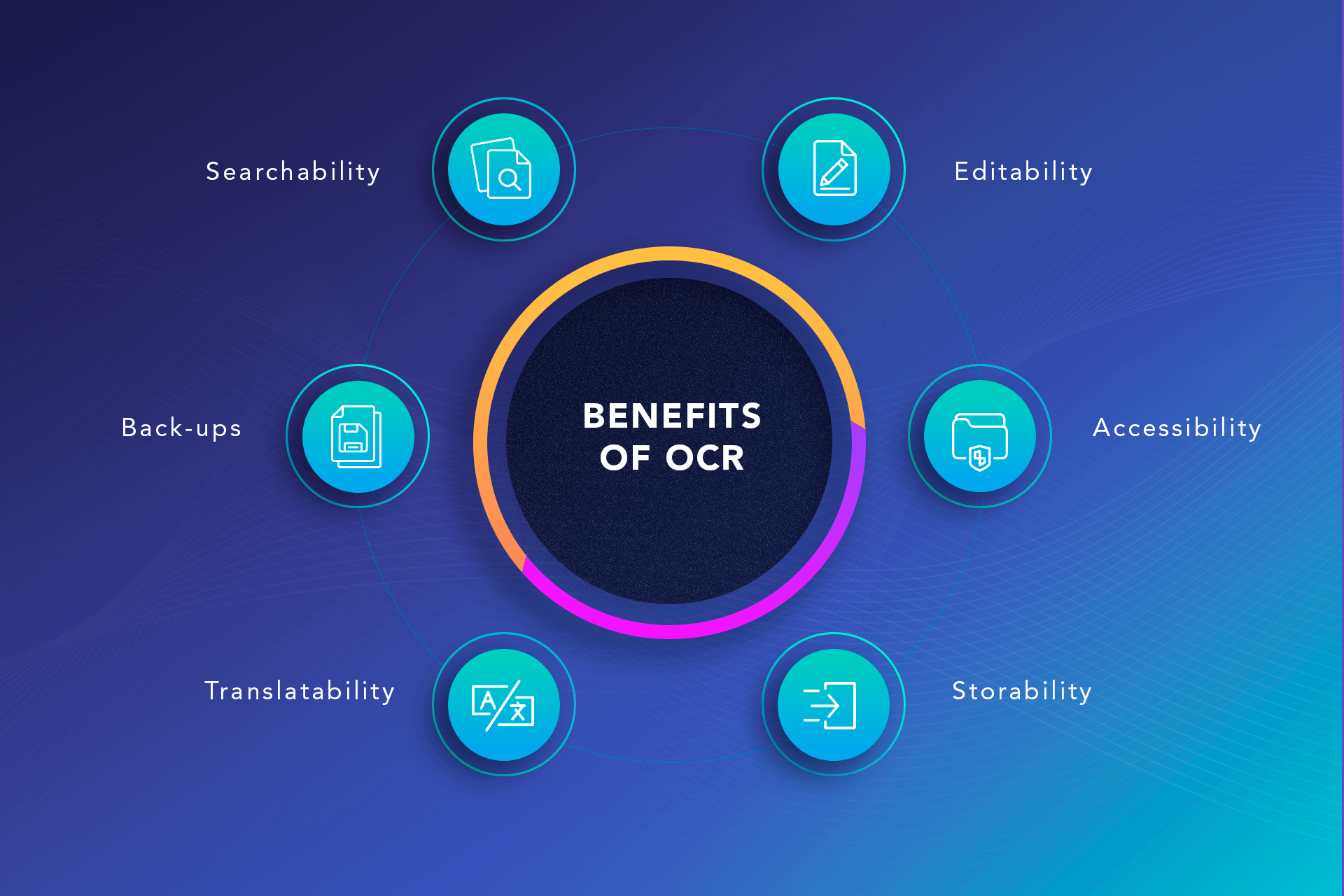
- Searchability
OCR engine processed data are transferred in text searchable formats, such as doc, rtf, txt, pdf, etc. Moreover, the required information can be internally found using a computer command Ctrl+F/Command+F.
- Editability
Once a paper document is digitized with a character recognition app, it can be easily amended with a word processor, such as Microsoft Word or Google Docs.
- Storability
Digital text data, both current and historical, are automatically stored in electronic libraries and storages.
- Accessibility
Digital storage of electronic documents can be easily accessed by locally distributed users.
- Translatability
OCR-powered solutions also embrace translational capabilities. An OCR engine is used for extracting the text from a scanned document and then translating it to a different language.
- Backups
Digital back-ups are cost-effective and, potentially, can be done an infinite number of times. Instead of maintaining costly duplicates and triplicates in paper form, object recognition software automatically creates OCR backups.
Next Generation of Character Recognition Apps
As the world becomes more tech-paced, OCR technologies do not stay still and keep track of innovations. The advanced OCR system is powered by Artificial Intelligence (AI). With its Deep Learning (DL) capabilities, AI enables OCR software to do more than recognize text, and it can derive meaning from it.
According to IDC, by 2021, global spending on AI systems will reach $57.6 billion.
Traditional OCR systems are template-based. The accuracy of converted documents highly depends on the quality of the input data that must fit the OCR framework. For the identification of entities in a document, OCR engines use templates. However, templates cannot handle possible complexities, such as combinations of printed and handwritten text, variations in formats, and tabular data. Therefore, unidentified elements, as well as possible errors, have to be processed manually.
An alternative to the traditional character recognition app is AI-powered OCR software. Based on DL techniques, AI enables object recognition technology to parse, and assign meaning and content structure to the provided text beyond just extracting it. Moreover, the overall accuracy of the software is improved, as the system automatically learns representations from a large amount of data, such as images, video, or text, without human involvement. As a result, a DL-driven OCR system can work with thousands of document variations, reducing mistakes that the traditional OCR system may make.
According to Forbes, the future of Optical Character Recognition is Deep Learning.
“With deep-learning-driven OCR, the company that scans insurance contracts gets more than just digital versions of their paper documents. They get instant visibility into the meaning of the text in those documents, thus unlocking billions of dollars worth of insights and saved time.”
Forbes
AI-Driven Object Character Recognition
Artificial Intelligence, abbreviated as AI, is a branch of computer science that creates a system able to perform human-like tasks, such as speech and text recognition and problem-solving. Using AI-powered technologies, OCR applications can accomplish specific tasks by analyzing huge amounts of data and recognizing recurrent patterns in them.
AI is mostly used at the data preprocessing stage to identify relevant sections requiring extraction and classifying text data before extraction. Additionally, AI enables the Object Character Recognition system to derive meaning from the current and historical data, flagging possible errors, exceptions, and fraudulent activity.
“One of the most revealing sources of corporate insights is a company’s data – the vast stores of organizational information, both current and historical, structured and unstructured, that contain hidden patterns, trends, customer preferences, and other intelligence that can help executives make informed business decisions.”
Accenture
Read more how you can digitize documents with AI.
Softengi: Object Character Recognition app for Logistics
Softengi has developed an OCR mobile app for iOS, which improves complex document management in logistics. By using the recognition technology for tracking transportation processes, archiving all cargo documents, monitoring shipment reports, and automatically filling in thousands of documents and applications, the customer company improved its operational processes and increased the number of documents processed by 4 times, enhancing its general operational workflow.
Read more about our OCR project.
Final Word
As the world becomes more digitized, making all industries smarter, companies must keep pace with exploding process complexity and accelerating innovations. The first step of the digital transformation is the introduction of Object Character Recognition (OCR), allowing companies to convert any kind of images containing written or printed text into a machine-readable format. As a result, the companies enhance their document workflow by automating manual routine work. Advanced object recognition systems powered with Artificial Intelligence (AI) do not only digitize text data but also derive meaning from these data.





